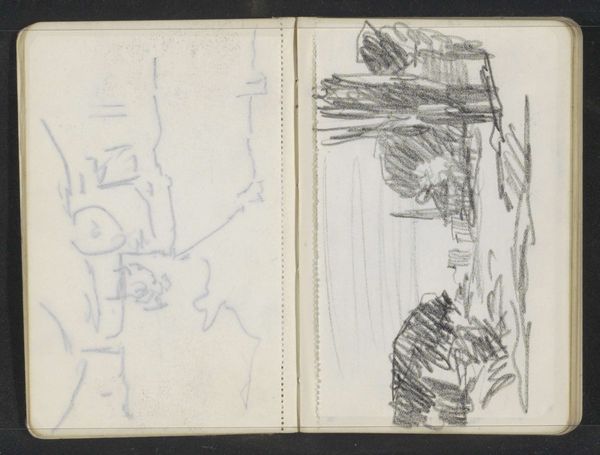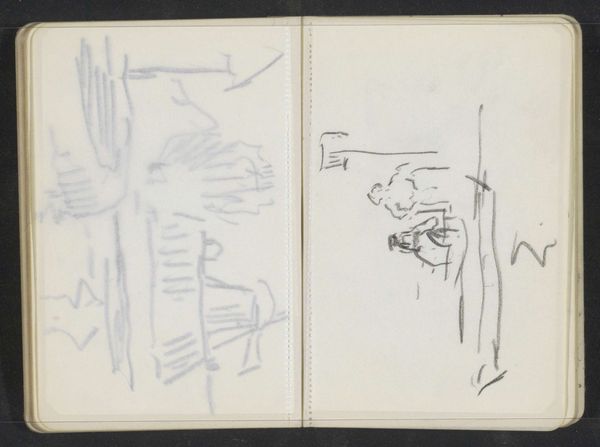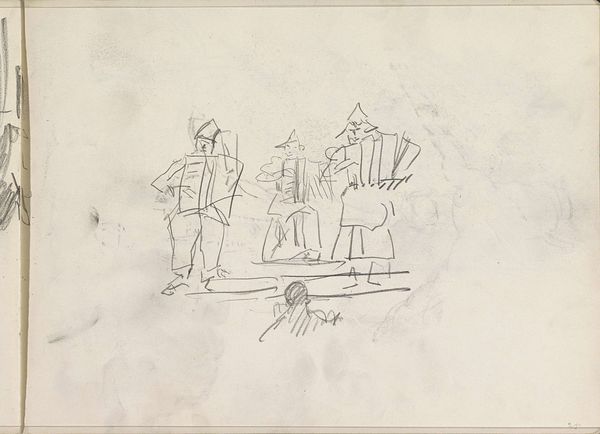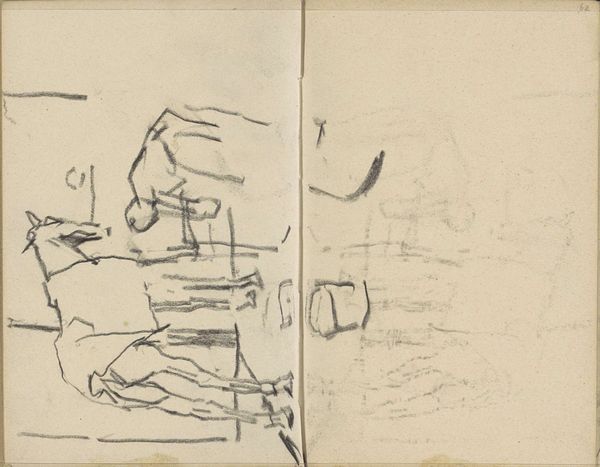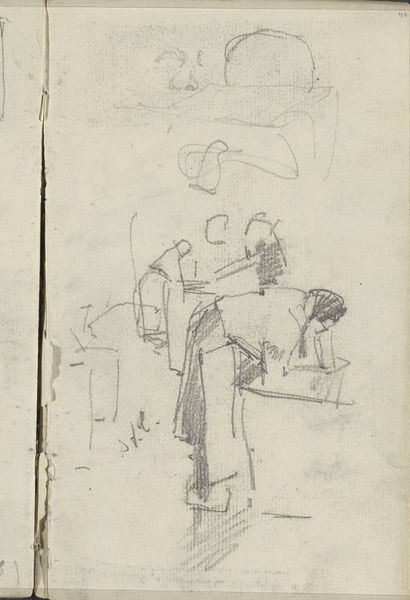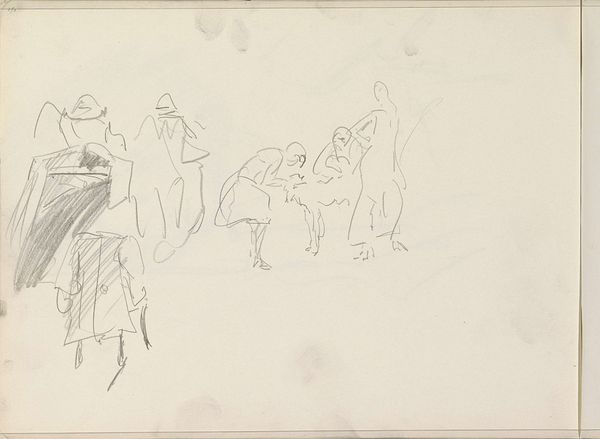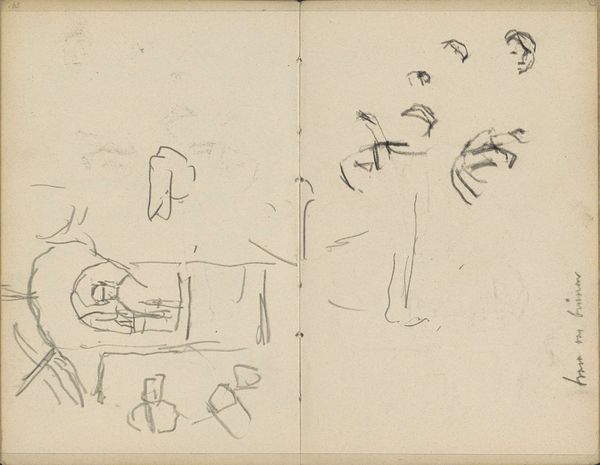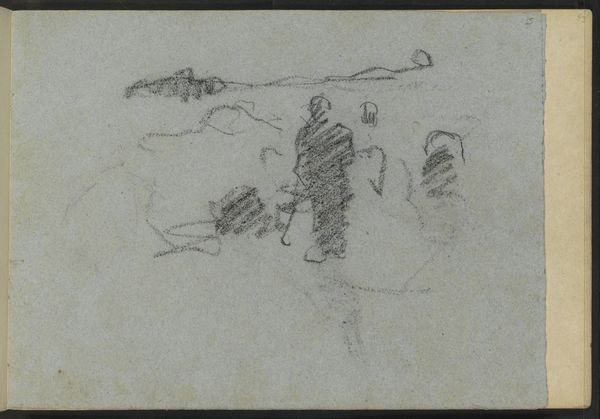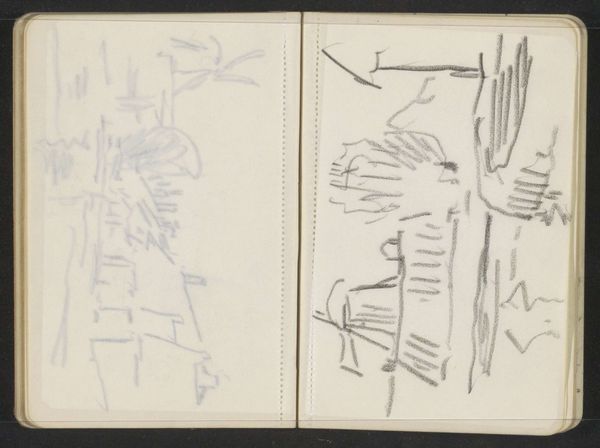
Copyright: Rijks Museum: Open Domain
Editor: This drawing, "Figuurstudies," by George Hendrik Breitner, created sometime between 1886 and 1923, is a study of figures done in graphite on paper. I’m struck by how unfinished it feels, like a quick glimpse into a bustling scene. What do you see in this piece? Curator: The immediacy you observe is crucial. Breitner was working at a time of rapid urbanization in Amsterdam, documenting everyday life, particularly of working-class women. This sketch isn't just about form; it's about capturing a moment, a feeling of modern life as it unfolds. Note the groupings of figures and ask yourself what social interactions or class structures are suggested, however subtly, even in this unfinished state. Are these figures empowered actors in their own right, or are they represented as victims of circumstance? Editor: That’s interesting, I hadn’t considered it in terms of class. The sketchiness almost makes them anonymous. Does that anonymity tie into a broader theme? Curator: Absolutely. Think about the rapidly changing urban landscape. The anonymity can be read as a reflection of the alienation and displacement that accompanied modernization. Were these women afforded the luxury of individual recognition in such a climate? Consider also the male gaze – who is Breitner in relation to these figures, and what power does he wield as an artist documenting their existence? Editor: So it’s about both capturing a moment in time and critiquing the social context of that moment? Curator: Precisely. It invites us to reflect on how rapid social change impacts individual lives and identities, especially for marginalized communities, and how art can serve as a document and a critical lens for those issues. Editor: I’ll never look at an Impressionist sketch the same way again. Thanks! Curator: My pleasure. It’s about looking beyond the surface to understand the complexities beneath.
Comments
No comments
Be the first to comment and join the conversation on the ultimate creative platform.
